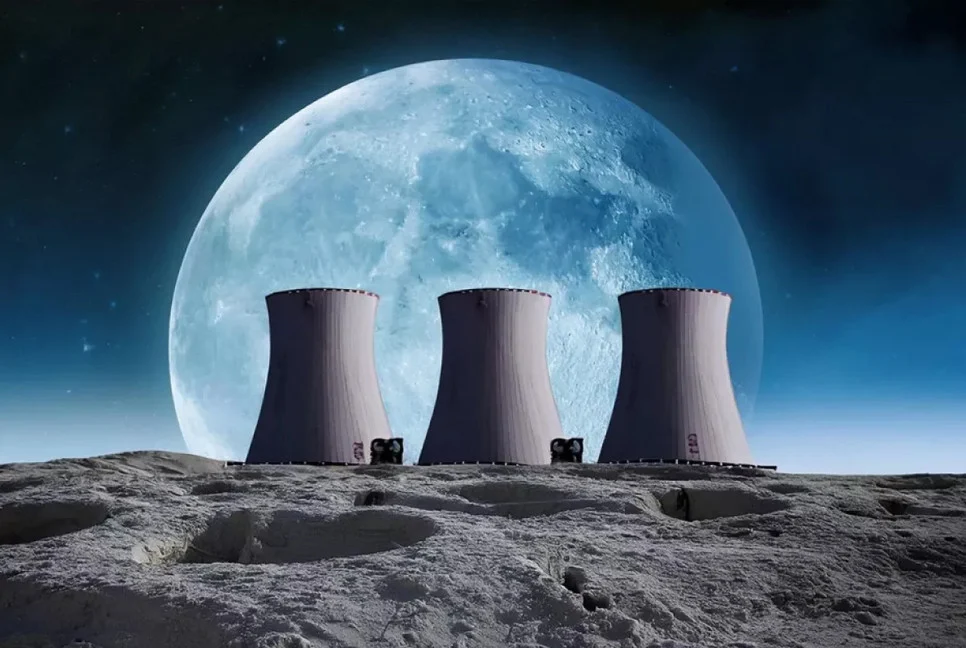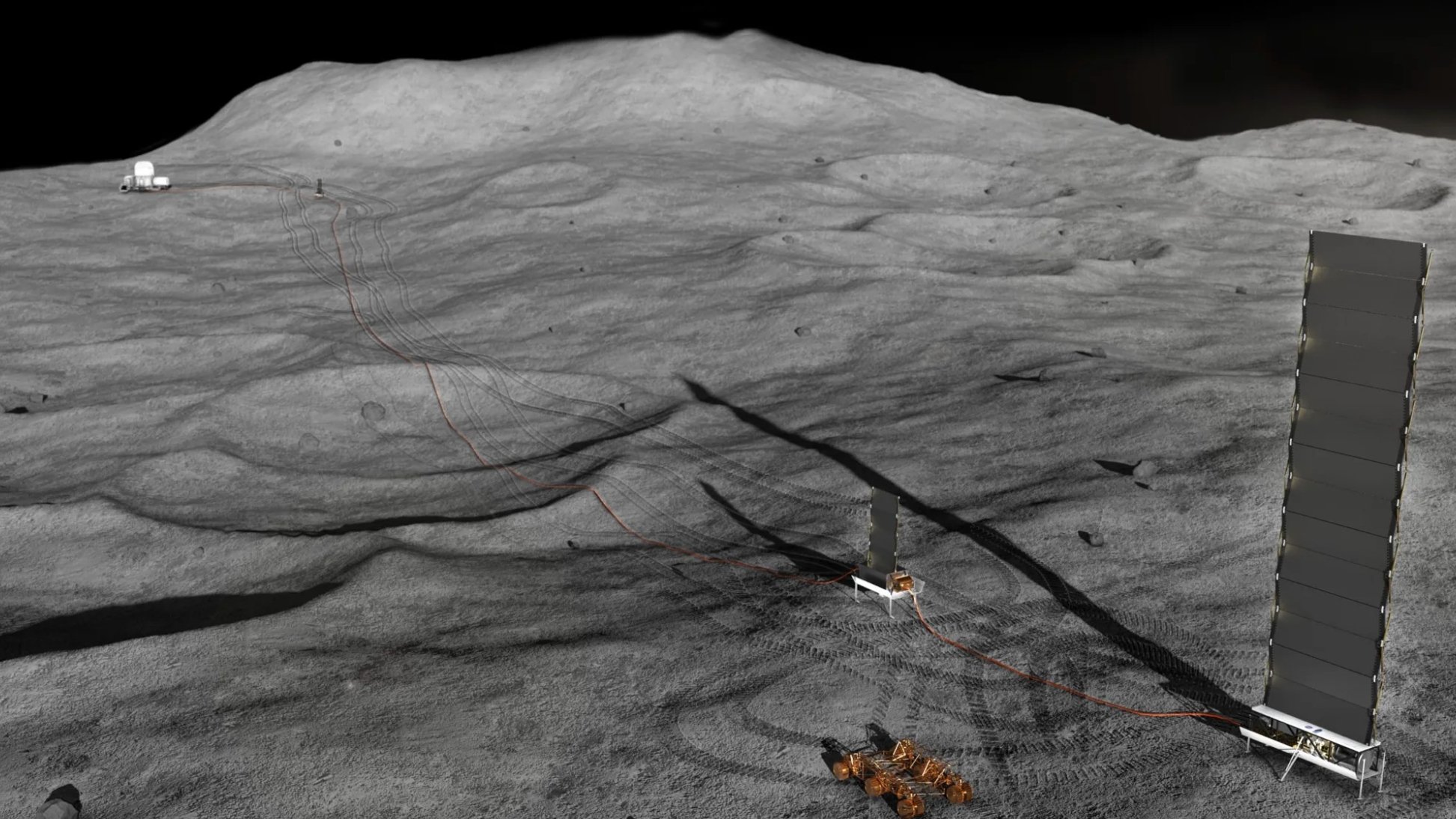NASA and the Ambitious Plan to Build a Nuclear Power Plant on the Moon by 2030
The National Aeronautics and Space Administration (NASA) is diligently pursuing ambitious plans to expand its presence in space. At the heart of these plans is a revolutionary project to construct a nuclear power plant on the lunar surface by 2030. This project is not only a milestone in the history of space exploration but also addresses numerous challenges in providing sustainable energy for long-duration human missions beyond Earth.
Sean Duffy, NASA’s new acting administrator, has accelerated the progress of this vital project by issuing a new directive. This strategic decision is a response to the growing energy demands for future lunar bases and an increasing competition with other space powers, particularly China and Russia, who are also advancing similar programs for lunar resource utilization.
The primary goal of this initiative extends beyond merely deploying a reactor; it encompasses establishing the necessary infrastructure to support a permanent human presence on the Moon, conducting unprecedented scientific research, and providing a foundation for future missions to Mars. Such a power plant will be capable of meeting the energy needs of lunar bases, including life support systems, research equipment, and in-situ resource utilization facilities.
The Unique Importance of Nuclear Energy for Lunar Habitability
Energy supply is one of the biggest challenges for long-duration space missions, especially in extraterrestrial environments like the Moon. Despite the abundance of solar energy during the lunar day, lunar nights, which last approximately two Earth weeks, completely cut off sunlight and drastically reduce surface temperatures. These conditions make the sole reliance on solar panels impossible for permanent human bases, highlighting the need for a stable and sunlight-independent energy source.
Nuclear fission power plants, by providing a concentrated, powerful, and 24-hour energy source, are considered an ideal solution to this dilemma. These reactors can continuously generate electricity regardless of the lunar day-night cycle or lunar dust, which can deactivate solar panels. This reliability is essential for maintaining critical life support systems, heating, communications, and operational equipment in the harsh lunar environment.
In recent years, NASA had focused on developing a 40-kilowatt fission power system for launch to the Moon in the early 2030s. However, Sean Duffy’s new directive has pushed this ambition further, mandating the agency to design and deploy a 100-kilowatt reactor by the end of 2030. This increase in power not only enables support for larger bases and more complex operations but also testifies to NASA’s strong determination to lead in this new space domain.

New Space Race: Outpacing Global Rivals
The space race in the 21st century has taken on new dimensions. While decades ago the primary competition was between the United States and the Soviet Union over reaching the Moon, today we witness a multilateral competition where countries like China and Russia are also pursuing ambitious plans for lunar presence in cooperation with each other. These nations are also seeking to establish permanent bases and exploit lunar resources, which necessitates reliable energy provision.
By accelerating its nuclear power plant project, NASA aims to surpass these competitors and solidify the United States’ position as an undisputed leader in space exploration. As the Politico report also noted, the first country to successfully deploy an operational nuclear reactor on the Moon could declare certain areas as “exclusion zones.” This could severely limit the exploratory and operational capabilities of other countries in those areas, thereby doubling the geopolitical and strategic aspect of this project.
This competition is not merely about scientific prestige but also concerns strategic interests, access to vital resources like water ice and Helium-3, and setting future standards for space activities. The successful deployment of a nuclear power plant by NASA will not only provide a significant technological advantage for the United States but could also shape the future trajectory of human presence on the Moon and beyond.
Sean Duffy and NASA’s New Approach
Sean Duffy’s appointment as NASA’s interim administrator on July 9th signals a potential shift in the organization’s approach. Duffy, previously known as a Fox Business Network host and a star of the reality TV show “The Real World: Boston,” and currently responsible for the U.S. Department of Transportation, brings a different experience and perspective to NASA.
His new directives to accelerate the nuclear power plant project indicate the high priority of this initiative within the current US administration. This pragmatic approach, aimed at reducing bureaucracy and expediting the development of key technologies, allows NASA to act with greater agility in confronting complex space challenges and achieving its long-term goals. This new leadership demonstrates the United States’ determination to maintain its supremacy in space.
Future Outlook: The Moon, A Gateway to the Cosmos
Beyond energy supply, a stable nuclear power plant on the Moon could serve as a gateway to countless future opportunities. These possibilities include:
- **In-situ Fuel Production:** Utilizing nuclear energy, existing lunar resources like water ice can be used to produce rocket fuel and breathable oxygen, significantly reducing the costs and complexity of future missions to Mars and other parts of the solar system.
- **Advanced Research Bases:** With access to abundant energy, advanced laboratories and observatories can be established on the Moon, providing unparalleled scientific capabilities, including radio telescopes on the far side of the Moon that are shielded from Earth interference.
- **Space Mining:** The possibility of extracting and processing valuable resources on the Moon, including rare metals and Helium-3, can be facilitated by nuclear energy, revolutionizing the space economy.
- **Long-term Habitability:** Nuclear power plants can support sustainable and self-sufficient human communities on the Moon, which not only aids in expanding human presence in space but also increases our knowledge about how to live in extraterrestrial environments.
The project to build a nuclear power plant on the Moon is not just a technological step; it is a symbol of humanity’s boundless ambition for exploration and settlement in the cosmos. With this initiative, NASA not only paves the way for a return to the Moon but also lays the cornerstone for a new era of space exploration that will push the boundaries of human knowledge and capabilities.
Source: Digiato




